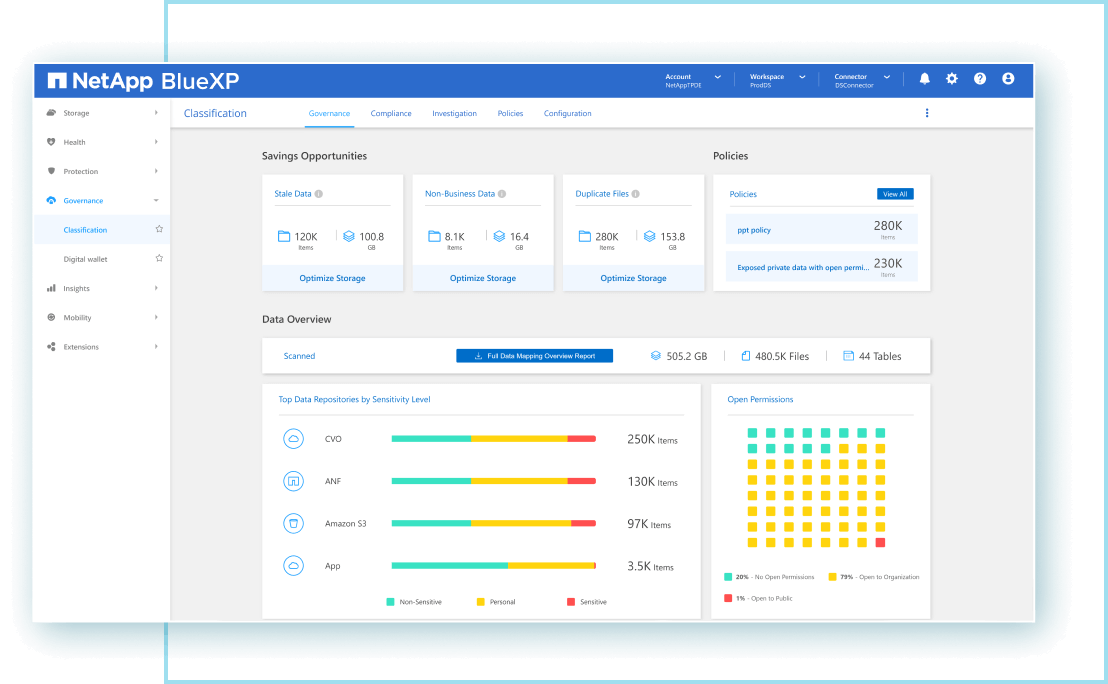- Product
- Solutions
- Resources
LEARN
- Cloud Storage
- IaaS
- DevOps
CALCULATORS
- TCO Azure
- TCO AWS
- TCO Google Cloud
- TCO BlueXP tiering
- TCO BlueXP backup and recovery
- Cloud Volumes ONTAP Sizer
- Azure NetApp Files Performance
- AVS/ANF TCO Estimator
- GCVE/CVS TCO Estimator
- VMC+FSx for ONTAP
- NetApp Keystone STaaS Cost Calculator
- Pricing
- Blog
TOPIC
- AWS
- Azure
- Google Cloud
- Data Protection
- Kubernetes
- General
- Help Center
- Get Started
BlueXP classification makes it possible to scan and classify data across your organization’s hybrid multicloud. Classification utilizes AI-driven natural language processing (NLP) for contextual data analysis and categorization, giving you actionable insights into your data to address compliance requirements, prepare data for GenAI and retrieval augmented generation (RAG), optimize costs, and accelerate migration.






